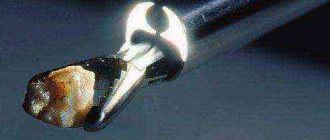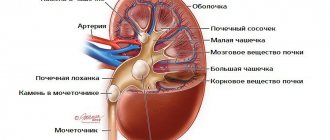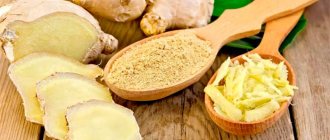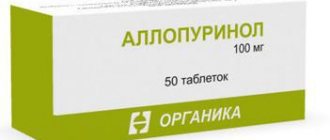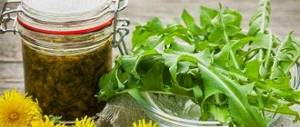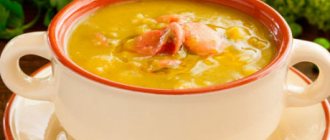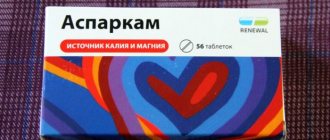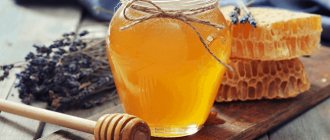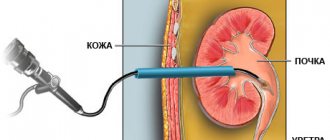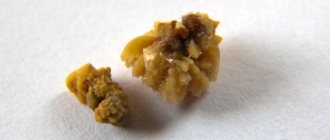Turmeric is a popular oriental spice, whose medicinal properties have long been used in Asia and Oceania, and the healers of ancient India were the first to pay attention to them about 2500 years ago.
The spice is made from the root of the Turmeric plant, which belongs to the ginger family. You can buy it in the spice department in ground form (in powder form), or you can buy the root and grind it yourself.
- Composition of turmeric
- Useful properties of turmeric
- How to use turmeric
- Contraindications for turmeric
Name
The Latin name of the plant is Curcuma longa . Translated from Latin, the word “turmeric” means “bit”. This is explained by the fact that the root of the plant looks like a fishing rod. But this name for the spice was given only in the 18th century. Until this time, the spice in Western Europe was called terra merita (which translates as “worthy land”).
Alternative names
There are other, alternative names for the useful plant - yellow ginger, turmeric.
Composition of turmeric
- A substance called curcumin is responsible for most of the beneficial and medicinal properties of turmeric - this is a dye (plant pigment) that is part of the spice and colors it a rich yellow-orange color. Plant pigments are not essential nutrients (meaning we can live without them), but they do have properties that are beneficial to our health.
- Turmeric contains vitamins B1 (thiamine), B2 (riboflavin), B4 (choline), B6 (pyridoxine), B9 (folate), C (ascorbic acid), E (tocopherol), K (phyllochitone), PP (niacin) and betaine.
- Turmeric contains the minerals iron, potassium, calcium, magnesium, manganese, copper, sodium, selenium, phosphorus, zinc.
- Turmeric is a source of a large amount of essential oils and fatty acids, which is why it is actively used as part of anti-aging masks for the face and body.
Description of turmeric
What does it look like
Turmeric is a perennial herbaceous plant. Its stem can reach up to 90 cm in length. Turmeric has oval-shaped leaves. The rhizome of the plant has a round shape. Its diameter does not exceed 4 cm. The tubular flowers of turmeric have a slightly irregular bend. They are painted pink.
Where does it grow
India, Indonesia, and Sri Lanka are considered to be the birthplace of turmeric. In nature, the plant is found in Southeast India. Turmeric is cultivated in China, Indonesia, Korea, Japan, and the Philippines.
Chemical properties
The plant contains curcumin, which prevents the formation of cancer cells and improves kidney and liver function. Curcumin has pronounced antioxidant properties.
The medicinal plant contains: zinc, manganese, magnesium, copper, selenium. The spice contains phytosterols, fatty acids, and iron.
Growing
The ideal option for growing turmeric is clay soils. The plant also takes root well in sandy soil. Before planting, dig holes reaching a depth of 15 cm. You need to put 2-3 pieces of the plant’s rhizome in them. The holes are dug in such a way that under the rhizomes there is a layer of soil at least 2 cm thick. The plant is planted in open ground in March-April.
Safety and harm
Turmeric is considered a safe product, but in some cases it can cause harm to health. The most common side effects are:
- Dyspeptic disorders. The spice can cause nausea and vomiting, diarrhea, and abdominal pain. In rare cases, chronic inflammatory diseases of the liver and gallbladder are exacerbated.
- Bleeding. Gynecologists do not recommend taking the spice to women during menstruation, as it reduces the blood's ability to clot. Turmeric should be used with caution when taking medications that affect blood viscosity (warfarin).
- Formation of kidney stones. Turmeric is rich in oxalates, which are structural components of stones that can appear in the lumen of the urinary system.
- Allergic reactions. As a rule, they manifest themselves in a mild form (skin rashes, itching).
Turmeric can be consumed by children from 5 years old.
Pregnant women are advised to limit their consumption of the spice or avoid it altogether. Turmeric can increase the tone of the uterus and complicate the period of bearing a child (especially in the later stages).
To reduce the risk of side effects, it is recommended to take turmeric in moderation. Scientists advise eating no more than 250 mg per day, however, studies have shown no harm even with a single dose of 12 grams.
Turmeric has contraindications and may cause side effects. It is recommended to include it in the diet with caution.
Rules for preparing turmeric
Collection season
The rhizomes of the plant are collected in November. It is recommended to remove turmeric from the soil before the onset of cold weather.
Harvesting and drying
The top part, small roots, and remaining soil should be removed from the rhizome. After this, the root of the plant can be immersed in hot water for 1 minute. Then the plant material is dried in a room with good ventilation for 7-14 days.
Storage rules
It is recommended to store crushed turmeric in a container made of glass. The lid of the jar is tightly sealed. This is necessary so that no foreign odors are mixed with the aroma of turmeric. The recommended shelf life of the plant is 3 years.
Contraindications for turmeric
Any product that has medicinal properties may be harmful in some diseases or in combination with certain medications. Turmeric is no exception:
- Allergy . You should not consume turmeric if you are allergic to it.
- Medications. When taking any medications, consult your doctor regarding their compatibility with turmeric. The combination with taking blood thinning drugs is especially dangerous!
- Hypotension. The spice may help further lower blood pressure.
- Pancreatitis. Although doctors usually recommend that patients with pancreatitis completely eliminate spices from their diet, an exception is made for turmeric. It can help treat the disease, but should be used with caution in this case. Consult your doctor about dosage.
- Stomach diseases. The same recommendations as for pancreatitis.
- Diabetes. Turmeric increases the effectiveness of medications for diabetes, which makes it useful, but requires consultation with your doctor for the correct dosage.
- Hepatitis. This disease requires serious treatment. You can find recommendations for the treatment of viral hepatitis (not in the acute stage) with turmeric. However, it can also lead to the development of autoimmune hepatitis.
- Cholelithiasis. Turmeric has choleretic properties and its use can lead to the passage of stones.
- Pregnancy. The spice can cause miscarriage or premature birth. This does not apply to a small amount of spice. But it's better to be safe.
- Breastfeeding period. It is better to refrain from consuming the spice during this time.
- to children under 6-7 years of age due to the sensitivity of the gastrointestinal tract.
PS Turmeric, for all its beneficial properties, is not a panacea and does not replace a healthy lifestyle. Any significant changes in health and appearance (especially in the presence of serious illnesses) require a comprehensive approach, including, at a minimum, proper nutrition and exercise.
Turmeric is an excellent aid, but nothing more. Therefore, if you have been drinking golden milk for several months and do not see any effect, then you should not increase the dose, but should think about what you can change in your lifestyle.
Recipes
1 When you cough, you can pour 800 ml of water into a small saucepan. Add 10 grams of turmeric to the container. After this, the resulting mixture is brought to a boil and left for 15 minutes. Then the drink needs to be strained. Honey and a few slices of lemon are added to the tea. The drink is consumed warm, 3 times a day.
2 If you have a sore throat , you can prepare a decoction for gargling with turmeric. In this case, you need to pour 30 grams of pre-dried eucalyptus leaves with 200 ml of boiling water. Add 1 teaspoon of turmeric to the resulting mixture. The product is infused for two hours and filtered. It is recommended to gargle with the resulting infusion three times a day after meals.
3 Decoctions prepared with turmeric are used to treat gastritis . The spice is especially effective in combination with activated carbon. To prepare the product, you need to crush 3 tablets of the medicine. Crushed activated carbon is mixed with a tablespoon of turmeric. The resulting mixture is poured with 50 ml of boiling milk. It is recommended to take 10 ml of decoction three times a day. The duration of the treatment course is 2 weeks.
4 An infusion of turmeric with honey helps strengthen the immune system and helps with liver cirrhosis .
The preparation process is quite simple. 500 ml of water needs to be boiled and cooled. After this, you need to add turmeric (about one teaspoon). After 10 minutes, the drink is filtered. A small amount of honey is added to the finished infusion. Drinking 60 ml of this infusion three times a day is an excellent prevention of stroke.
Login to the site
Turmeric is from the ginger family. Several types of plants are collected under the name turmeric, the most common being Curcuma longa and Curcuma iedoaria. Today, the healing properties of turmeric are recognized throughout the world. Turmeric normalizes blood pressure. Substances contained in turmeric protect blood vessels from atherosclerosis. They reduce the risk of this disease by at least 2 times. Turmeric helps stop its development. Turmeric helps with headaches caused by liver diseases. Turmeric is also good for the heart, it strengthens the heart muscle. Turmeric helps the kidneys work. Turmeric stimulates the human immune system Turmeric helps increase the body's resistance to various types of infections. This spice is an indispensable support for those who are weakened after a chronic illness or are sick. It warms and cleanses the blood. Turmeric is an excellent natural antibiotic.
This quality makes it truly priceless. It would seem that pharmacies are full of antibiotics, but, unlike synthetic drugs, the spice-medicine does not worsen the condition of the gastrointestinal tract and does not destroy the liver. On the contrary, when consuming turmeric, the activity of the intestinal flora increases and digestion improves. Gastrointestinal diseases. Turmeric has a beneficial effect on the functioning of the stomach, gall bladder and liver. Turmeric helps remove toxins from the human liver and prevents stone formation in the gallbladder. Turmeric should be used for those diseases of the gastrointestinal tract that are caused by decreased bile secretion. It has a bile-forming and choleretic effect - it increases the synthesis of bile acid by more than 100%. Turmeric is indicated for cholecystitis. In India, thanks to turmeric, there is basically no cholecystitis. Yellow root is a wonderful stimulator of bile production, and therefore improves digestion processes in the body. The yellow coloring substance curcumin promotes the emptying of the gallbladder. Essential oil increases the formation of bile in the liver and inhibits the growth of bacteria. Curcumin reduces the level of bad cholesterol (low-density lipoprotein) in the blood and normalizes blood composition. Turmeric not only cleanses and improves blood circulation, but also stimulates the formation of red blood cells and also reduces platelet aggregation. In the study, turmeric showed a pronounced hepatoprotective effect. Turmeric, like silymarin, has been found to protect the liver from a variety of toxic substances, including carbon tetrachloride. Turmeric protects the liver from toxins and from the harmful effects of medications when taken for a long time. Turmeric is recommended to be added to food in case of poisoning with chemicals and insecticides. Turmeric effectively removes toxins from the body. Turmeric reduces the secretion and acidity of gastric juice. Curcumin has an antiulcer effect by inhibiting Helicobacter pylori. As a strong antiseptic, turmeric is extremely effective for diseases of the stomach and gastrointestinal tract, especially chronic diarrhea and flatulence. For treatment, it is recommended to take the powder mixed with water (1 teaspoon per glass of water). Turmeric is a good remedy for improving digestion, especially when eating heavy foods. Turmeric also reduces the craving for sweets and fatty foods. Throat diseases The excellent antiseptic, healing and analgesic properties of turmeric can relieve sore throat and remove mucus, and disinfect the inflamed mucous membrane. Orally administered curcumin is as effective as cortisone or phenylbutazone for acute inflammation and half as effective as these medications for chronic inflammation, but without the side effects. To treat tonsillitis and pharyngitis, add a pinch of turmeric and salt to 0.5 glasses of water at room temperature. Gargle 4-6 times a day, including at night and after sleep. Also for pharyngitis: mix 1 teaspoon of honey with 1/2 teaspoon of turmeric. Keep it in your mouth 3-4 times a day for several minutes. For respiratory diseases, colds, and also to cleanse the blood, turmeric is used as follows: brew 0.5 teaspoon of turmeric with 0.5 cups of boiling water, add a teaspoon of honey, leave covered for 5 minutes. Drink 2-3 times a day. Also used: mix 0.5 teaspoon of spice powder with 30 ml of warm milk. Take 3-4 times a day. Inhalation of smoke from 0.5 tsp. Burnt turmeric for cough, bronchitis, catarrh of the upper respiratory tract causes copious mucus secretion and brings instant relief. For diseases of the nasopharynx, inhaling smoke from burnt turmeric is also effective. Diabetes mellitus The properties of turmeric allow it to successfully prevent diabetes mellitus. For diabetes mellitus, it is effective to eat a third of a teaspoon of powder, washing it down with plenty of water, before each meal. To control blood sugar levels and reduce the intake of synthetic drugs, it is recommended to take turmeric with mumiyo. Standard dosage: 500 mg of turmeric with 1 shilajit tablet taken twice a day. Turmeric regulates metabolism, correcting both excess and insufficiency of metabolic processes, and promotes protein absorption. Therefore, turmeric extract is included in modern preparations for figure correction. Asthma (especially in the case of an allergic nature of the disease) 0.5 tsp. Turmeric powder in 0.5 glass of hot milk is taken 2-3 times a day. The action will be more effective when taken on an empty stomach. Anemia Turmeric is very rich in iron. For anemia, it is recommended to take from 0.25 to 0.5 tsp. spices mixed with honey. In this combination, iron is well absorbed. Turmeric stops bleeding and heals wounds. For cuts, wash the wound and sprinkle it with turmeric powder. This will help stop the bleeding and promote speedy healing of the wound. For internal bleeding, take turmeric, adding saffron, or turmeric alone. Turmeric works great for burns if you immediately fall asleep. A good remedy for burns is turmeric paste with aloe juice. Bruises and traumatic tumors will go away faster if you use turmeric paste: dilute 0.5 tsp with boiled water. turmeric and a pinch of salt to make a thick mixture. Apply it to the sore spot, cover with gauze and hold until it dries. The same paste is used for lichen, infectious eczema and other skin diseases caused by parasites. Turmeric is indispensable for skin diseases. It promotes good metabolism. Turmeric paste is an excellent remedy against eczema, itching (externally), quickly resolves boils. Turmeric, regularly added to food, cures hives. Lotions made from ghee and turmeric are good for pustules, skin ulcers, and abscesses. Turmeric has a positive effect on the condition of joints, reduces pain and inflammation in arthrosis, arthritis, rheumatism. Turmeric reduces swelling in arthritis To treat sprains and often associated swelling, prepare a paste of turmeric with lemon juice and salt and apply it to the affected area. Turmeric is used in combination with honey (externally) for bruises, sprains, and inflammation of the joints. To combat pain in the joints and spine, a mixture is used: mix turmeric with ground ginger in a 1:2 ratio, dilute with oil to the consistency of thick sour cream. You just need to apply the mixture to the sore spot, cover it with a piece of polyethylene or thin paper, fix it and leave it overnight. Inflammatory gum diseases Rinse: 1 tsp. Adding turmeric to a glass of warm water will relieve inflammation, bleeding gums, and strengthen them. Inflammation of the eyes Dilute 2 teaspoons (6 g) of turmeric powder in 0.5 liters of water, boil until the water has evaporated by half. Cool and drop into the affected eye 3-4 times a day. In India, turmeric has been considered for many years as a means of preserving youth and beauty. In India, turmeric is widely used as a cosmetic product: it improves complexion, cleanses the skin, and opens sweat glands. Turmeric can significantly slow the progression of Alzheimer's disease. This seasoning, which can be found in most Indian dishes, prevents the formation of nodules in the blood vessels of the brain caused by this disease. From the point of view of researchers, this probably contains the answer to the question why people suffer from Alzheimer’s disease in the East much less often than in the West. Turmeric has been scientifically proven to be effective in fighting cancer and is a powerful antioxidant. Curcumin, which creates the smell and taste of turmeric, as well as its derivatives, inhibit the development of tumors. Thus, people who consume large amounts of curry-flavored foods are less likely to get cancer. In a clinical trial on 15 patients with advanced colon cancer, turmeric extract equivalent to 180 mg of curcumin taken orally was found to be highly therapeutic. Recently, scientists are increasingly asking the question why there are far fewer blood cancer patients in the East. Is it because turmeric is present in people's daily diet? As a result of the studies, it was found that this spice prevents the growth of cells infected with leukemia, and also protects against the harm caused to the body by cigarette smoke and the consumption of processed foods. Scientists recently released stunning research results from the University of Toronto. It turns out that curcumin can bring cystic fibrosis patients back to life! And this is a very serious disease with cystic degeneration of the endocrine glands. Dosage and contraindications Scientists recommend including this spice in your family’s diet. Surprisingly, turmeric has virtually no restrictions on the amount you can consume per day. The optimal daily dose of spice is 12 grams (Daily dose 1-3 grams?). Approximately 1 tsp is added to food. for 5-6 servings. It should be remembered that spices can only be given to children over 5-6 years old (Not recommended for children under 2 years old?). With proper use of the spice in the children's diet, the properties of turmeric will help your child successfully fight excess weight. In case of blockage of the bile ducts, cholelithiasis and jaundice, its use is prohibited. Turmeric should be used with caution by people with allergies, as well as by patients with gastritis and stomach ulcers. Do not take it as a single drug in large dosages during attacks of cholelithiasis or during pregnancy. Chemical composition of turmeric The chemical composition of turmeric includes an aromatic essential oil, which also contains zingiberene, borneol and other terpenoids, as well as curcumin and didesmethoxycurcumin. Turmeric contains calcium, iron, phosphorus and iodine. Vitamins: C, B K B2, VZ. Recipes Including Turmeric Indian Recipes Turmeric, known as haridra in Sanskrit, is grown throughout India, and especially in the states of Maharashtra, Tamil Nalu and West Bengal. There are a number of its varieties, each of which is named after the area where it is grown. The short and thick root of the plant with its oblong, round shape is turmeric. It is yellow-brown in color and consists of a central part in the form of an onion and branches extending from it like fingers. They can be broken off as needed. After cleaning the roots from dirt and lateral roots, they are subjected to a preservation process. The roots are boiled in water and then dried. Later they are “polished” by removing the skin. The final product is the attractively colored turmeric we see in the market. Turmeric is an integral part of Indian culture, especially among Hindus. It is widely used in their religious ceremonies and is considered a sign of goodness. It is customary among Hindus to smear turmeric paste on the bride before taking a bath. Its powder is included in many spices. Turmeric is considered a good organic coloring agent everywhere. In addition, it has important medicinal properties. It occupies one of the first places in Indian medical systems. Juice squeezed from fresh roots helps in the treatment of wounds, bruises and leech bites, as well as many skin diseases. Turmeric paste is used in cases of smallpox and chickenpox to speed up the process of drying and scab formation. This paste is used for lichen, eczema and other skin diseases caused by parasites. In cases of pemphigus and herpes zoster, the affected areas are covered with mustard oil and then powdered with turmeric. After 3-4 days there is improvement. Turmeric paste mixed with crushed red sandalwood in buffalo milk removes freckles from the face. According to Sushruta Samhita, if you take 40 g of turmeric with urine for a month, it helps in the treatment of leprosy. Milk with turmeric roots boiled in it with sugar is a popular drink for treating colds. A mixture of ghee and turmeric powder helps relieve cough. Simply inhaling the smoke of burnt turmeric in case of catarrh produces copious mucus and gives instant relief. Turmeric powder mixed into a paste with lemon juice is applied to the inflamed joints. The same powder mixed with ghee, honey and rock salt is useful in some cases of poisoning. In case of a scorpion sting, if you douse the sore spot with smoke rising from burning charcoal, on which turmeric powder is sprinkled, relief comes immediately. An ointment prepared from turmeric, hemp leaves, onions mixed with warm mustard or linseed oil provides relief from painful hemorrhoids. A paste of turmeric powder and milky juice of milkweed (euphorbia nerifolia) is also useful for hemorrhoids. There are a number of preparations containing turmeric, such as Haridrakhanda for intractable skin diseases, Haridradi Ghrta for jaundice and Hiridhradi taila (oil) for wounds. Runny nose, inflammation of the paranasal cavities, sinusitis, frontal sinusitis. The key yoga technique when working with any inflammation of the nasopharynx and paranasal cavities is Jala Neti Kriya - rinsing the nasopharynx. In India it is made using a special teapot for rinsing, but you can also use a regular teapot or sippy cup. Pour boiled water into it and add salt (1 teaspoon of salt per 400 g of water). Insert the spout of the kettle into your nostril and tilt your head to the side so that water begins to flow out of the other nostril. To avoid injuring the mucous membrane, you can put a pacifier or a short piece of soft rubber tube on the spout of the kettle. As much water flows from right to left, the same amount must flow in the opposite direction. After completing the rinsing procedure, you should bend over and take several sharp exhalations through your nose. Repeat this 3-4 times to drain the remaining water from the frontal sinuses and paranasal cavities. During the day, water will pour out from time to time in small portions - this is normal.
For normal practice, when Jala Neti is used for the purpose of preventing colds, the water temperature should be slightly lower than body temperature. If the nasopharynx is clogged with mucus, take the water as warm as possible. When treating chronic sinusitis and runny nose, if you add turmeric to warm water (1/2 teaspoon per 400 g of water), this will significantly increase the therapeutic effect.
Mastering the Jala-Neti procedure should begin simply with salt water. Most likely, during training you will be faced with the fact that water flows everywhere, but not where it should. We advise you to add turmeric to the solution only when you have mastered this procedure perfectly, because turmeric has a persistent coloring effect and does not wash off well.
Yogis recommend using regular water with salt regularly, especially for residents of cities with difficult environmental conditions. Turmeric is used only in case of illness.
The classic treatise “Hatha Yoga Pradipika” says: “The purifier of the mind and the giver of divine insight is Neti, for Neti overcomes all ailments in the part of the body that rises above the shoulders.” Vitiligo In India, turmeric-based ointment is used. Place 200-250 g of turmeric in 4 liters of water overnight. In the morning, boil until half is left. Mix the remaining with 300 mg of mustard oil. Boil over low heat until all the water has evaporated. Pour the resulting oil into a dark glass bottle. This oil is applied to the white spots on the skin every morning and evening for several months. SOURCE
Beneficial features
Turmeric contains a sufficient amount of vitamins (C, K, B1, B2, B3) and microelements (iodine, calcium, iron, etc.). Curcumin is a substance found in turmeric root. Thanks to its healing properties, the spice is very useful for humans. Turmeric is an orange-colored spice with a characteristic smell and taste. It has a good anti-inflammatory effect, which is why it has long been used to treat many ailments and ailments:
Return to contents
The effectiveness of thrush treatment
The spice helps reduce the amount of discharge.
Turmeric successfully fights Candida fungi, preventing their development and relieving painful manifestations. The spice also helps prevent their re-production, which is important for frequent relapses of candidiasis. Thanks to the antifungal properties of turmeric, the mucous membranes of the genital organs are less injured, the burning sensation becomes less severe, and the amount of cheesy discharge is noticeably reduced.
The spice has a positive effect on the immune system, increasing it and increasing the body's defenses, which fight negative external and internal factors. By using turmeric for therapeutic and preventive purposes, you can significantly improve your overall well-being, improve your mood and protect yourself from diseases. Unlike medications, this natural remedy does not have toxic properties, so it is recommended even for young children.
Source: https://etogribok.ru/molochnica/narodnye-sredstva/kurkuma-ot-molochnitsy.html
Rationale for using turmeric in cancer
In India, the beneficial properties of turmeric were familiar to people in the distant past. The spice contains a large number of valuable microelements, vitamins and substances that have a beneficial effect on internal organs and systems. It enhances the protective functions of the immune system, promotes accelerated metabolism and fights many bacteria and toxins.
Due to the presence of rare essential oils, turmeric against cancer is considered one of the best folk remedies that eliminate malignant tumors.
The greatest effect from the use of spices is noticed in the early stages of the development of oncological processes. At this time, the powder is consumed in its pure form, which leads to quick results. In addition to its anti-inflammatory effect, the spice starts the process of restoring damaged cells and cleanses the blood.
The key advantage of this form of treatment is the absence of intoxication, with the exception of rare cases associated with individual intolerance to individual components. Turmeric for oncology can fight tumors in the pancreas, stomach, intestines, lungs and other organs. It is also taken if you have breast cancer.
Indians call the spice yellow ginger because this is due to the specific shade of the roots. Turmeric contains special esters enriched with terpenoids, zingiberene, borneol, curcumin and other valuable elements. The main bioactive substance is curcumin, which has the following properties:
- Antioxidant.
- Anticancer.
- Choleretic.
- Immunomodulatory.
- Bactericidal.
- Anti-inflammatory.
People in India consume about 1.5-2 g of turmeric per day, due to which the incidence of cancer is reduced. At the same time, the local population can freely drink dirty water, which would give Europeans an intestinal infection.
The ancient science of Ayurveda mentions the use of turmeric and its milk solution to combat various diseases.
Therapeutic effects of turmeric
Many years of research by scientists have proven the exceptional benefits of this spice for the human body. Indian saffron is a natural antibiotic and antioxidant; it can strengthen the immune system and restore strength after severe operations and illnesses.
This spice has a beneficial effect on the digestive system, hematopoiesis, joints, skin and other organs.
Antimutagenic properties
According to numerous scientific studies, curcumin is recognized as a natural antimutagen, it prevents the appearance of cancer cells. Thanks to its antioxidant properties, curcumin protects the genome of the body's cells from degeneration.
Curcumin is recognized as a natural antimutagen, it prevents the appearance of cancer cells
Anti-amyloid properties
Curcumin prevents the formation of amyloids, which cause Alzheimer's disease. One of the curcumins, bisdemethoxycurcumin, enhances the activity of monocytes that absorb beta-amyloid.
It is beta-amyloid that is the pathological protein, due to the accumulation of which in the body Alzheimer's disease occurs.
Immunomodulatory properties
Curcumin is able to activate the antimicrobial protein cathelicidin, which helps strengthen the immune system. In the autumn-spring period, when flu and acute respiratory infections are raging everywhere, it is advisable to include the ground root of this spice in your daily diet.
Is turmeric suitable for pregnant and lactating women?
The use of turmeric in pregnant women is not contraindicated. But you should follow some rules for its use:
- reduce the daily dose to a pinch;
- add to food, but do not consume the aqueous solution or drink it with milk;
- External use is acceptable.
The spice improves immunity, which is important for pregnant women. It also regulates intestinal function, removes toxins from the body, and this reduces the severity of toxicosis. Nursing mothers should avoid using the seasoning. Through breast milk it can cause allergies in the baby.
What are the benefits of turmeric for beauty (video)
Related posts:
- Pineapple for kidney stones Diet and menu for urate kidney stones Leave a comment 10.105 Treatment of urolithiasis is carried out by a doctor, taking into account concomitant diseases, age and individual characteristics of the patient. A diet for urate kidney stones is prescribed to all patients with this pathology without exception. Often its clear […]
- Salads for kidney stones Diet and menu for urate kidney stones Leave a comment 10.105 Treatment of urolithiasis is carried out by a doctor, taking into account concomitant diseases, age and individual characteristics of the patient. A diet for urate kidney stones is prescribed to all patients with this pathology without exception. Often its clear […]
- Treatment of kidney parenchyma cysts Changes in the kidney parenchyma To maintain normal life, the body needs to carry out metabolism. In order for the body to receive everything it needs from the environment, there must be a continuous cycle between the person and the external environment. During metabolic processes, products are formed in our body [...]
- Mild pain in the right kidney Pain and its causes by category: Pain and its causes in alphabetical order: pain in the right kidney Normally, the human body has two kidneys. They are located on both sides of the spinal column at the level of the XI thoracic and III lumbar vertebrae. The right kidney is located slightly lower than the left one, since from above it borders […]
- Stitching pain in the kidney area Pain and its causes by category: Pain and its causes in alphabetical order: pain in the kidney area Normally, the human body has two kidneys. They are located on both sides of the spinal column at the level of the XI thoracic and III lumbar vertebrae. The right kidney is located slightly lower than the left one, since from above it borders […]
- Cyst of the right kidney size is normal Changes in the parenchyma of the kidney To maintain normal life, the body needs to carry out metabolism. In order for the body to receive everything it needs from the environment, there must be a continuous cycle between the person and the external environment. During metabolic processes, products are formed in our body [...]
- Kidney cyst 14mm Changes in the kidney parenchyma To maintain normal life, the body needs to carry out metabolism. In order for the body to receive everything it needs from the environment, there must be a continuous cycle between the person and the external environment. During metabolic processes, products are formed in our body [...]
- Cyst of the parenchyma of the right kidney Changes in the parenchyma of the kidney To maintain normal life, the body requires metabolism. In order for the body to receive everything it needs from the environment, there must be a continuous cycle between the person and the external environment. During metabolic processes, products are formed in our body [...]
Turmeric - beneficial properties and contraindications
The healing and beneficial properties of turmeric are due to the chemical composition of the seasoning. And it is quite rich in vitamins and micro- and macroelements. Thus, vitamins K, C, B, B2, B3, as well as iodine, iron, phosphorus and calcium are found in turmeric. In addition, the spice contains antioxidants that rejuvenate the body and block the development of cancer tumors, and essential oil, which includes terpenes. The color of this tasty and healthy spice is provided by the bright orange-yellow dye curcumin - the main component of the seasoning, the molecules of which can penetrate inside the membranes of the body's cells, strengthen them and make them more resistant to infections. Thanks to the action of curcumin, the total number of leukocytes and cells that form antibodies in the body increases.
Healing properties of turmeric
Indian saffron is often used in official and folk medicine. Ancient Indian healers prescribed this spice to cleanse the body. Consumption of turmeric reduces the risk of developing diabetes, removes excess cholesterol, and helps with arthritis.
100 g of this spice contains 90% of the daily requirement of vitamin B6, as well as vitamins C, PP, E, K, B1, B2, B9. In addition, it contains turmeric and minerals - magnesium, potassium, calcium, manganese, copper and iron.
Benefits for gastrointestinal problems
- Regulates digestive processes and heals the stomach, helps relieve discomfort due to flatulence.
- Protects against ulcers, cures inflammation of the mucous membrane.
- Treats intestinal inflammation, reduces pain caused by intestinal irritation.
- Curcumin has a healing effect on the pancreas.
Benefits for the musculoskeletal system
- Indian saffron significantly reduces pain in rheumatoid arthritis, increases joint mobility and saves bone tissue from destruction.
- For osteoarthritis, curcumin prevents the destruction of bone tissue much more effectively than chemical drugs.
- This spice has long been used to heal bone fractures. They apply bandages with Indian saffron ointment and drink “golden milk.”
Turmeric Golden Milk for Healing Bone Fractures
Benefits for hematopoiesis
- When the production of hemoglobin is poor (the disease is inherited), turmeric is used.
- For anemia, turmeric helps produce more red blood cells and protect them. It contains a sufficient amount of iron.
- Curcumin helps thin the blood and prevents the formation of blood clots, which reduces the risk of heart attack and stroke.
- Turmeric protects the spleen from the toxic effects of heavy metals and strengthens its function.
- Curcumin has a beneficial effect on the biochemical composition of the blood. It normalizes the level of harmful cholesterol.
For anemia, turmeric helps produce more red blood cells and protect them
Benefits for brain activity
- For depression and bipolar disorder, this spice significantly improves the condition.
- Curcumin increases the production of joy hormones.
- This spice helps cope with post-traumatic stress, reduces anxiety and erases negative memories from memory.
- Indian saffron helps improve memory in older people.
- Curcumin is used for the prevention and treatment of Alzheimer's and Parkinson's diseases.
- Indian saffron is used for the prevention and treatment of stroke.
- Curcumin is used in the treatment of epilepsy; it can significantly reduce seizure activity.
Turmeric for oral problems
- For gingivitis and bleeding gums, rinsing with a solution of Indian saffron is a great help.
- For periodontitis, curcumin slows down the process of bone loss.
- An ointment with this spice successfully treats oral lichen planus, and curcumin heals ulcers of the mucous membrane.
Respiratory health
- The first cough remedy is milk with Indian saffron, and turmeric oil is good for reducing cough.
- Indian saffron helps with bronchial asthma and improves breathing.
- Curcumin reduces the harm of nicotine and helps in the treatment of chronic obstructive pulmonary disease.
Liver and Gallbladder Health
- Turmeric protects the liver from toxic compounds and alcohol intoxication.
- Curcumin will be useful in the treatment of hepatitis C and liver fibrosis.
- Indian saffron stimulates the gallbladder to contract and prevents the formation of stones. If they already exist, then it is undesirable to eat this spice.
Turmeric protects the liver from toxic compounds
Improved metabolism
- Indian saffron prevents obesity and promotes faster weight loss when combined with moderate nutrition and exercise.
- When consumed, this spice reduces sugar levels, bad cholesterol, and stimulates insulin production.
- Curcumin stabilizes blood pressure by relaxing blood vessels.
Benefits for the endocrine system
- Eating Indian saffron reduces the likelihood of a goiter; if it already exists, it reduces its size. Curcumin also reduces inflammation of the thyroid gland.
- For hirsutism, which occurs due to hormonal imbalance, turmeric reduces hair growth and alleviates disorders.
Indian saffron reduces the risk of goiter
Heart and vascular health
- Curcumin produces a cardioprotective effect. It is used for ischemia, heart attack, arrhythmia, cardiomyopathy.
- Curcuminoids can reduce the number of heart attacks in the postoperative period.
- Curcumin protects against thrombosis and helps in the treatment of atherosclerosis.
Health benefits for women
- Curcumin can significantly reduce the symptoms of PMS.
- Since curcumin is a natural estrogen, its use during menopause perfectly copes with the manifestation of menopause.
- When treating endometriosis, drugs with curcumin can bring relief; they regulate hormonal levels and slow down the growth of the endometrium.
- Preparations containing turmeric slow down the growth of uterine fibroids. They are effective in the treatment of polycystic ovary syndrome.
- Indian saffron works well against vaginitis and leukorrhea.
Curcumin is a natural estrogen
Health benefits for men
- Smoking and excessive alcohol consumption lead to infertility in men. Indian saffron can reduce the harmful effects of alcohol and nicotine.
- Curcumin is used in the treatment and prevention of prostatitis.
Benefits for the urinary system
- Curcumin inhibits the growth of microbes that cause genitourinary infections. It increases their susceptibility to antibiotics.
- Curcumin is used to treat all kinds of kidney diseases.
Benefits for the skin
- Turmeric is very effective in fighting wrinkles; its antioxidant properties will help protect the skin from premature aging.
- Indian saffron can protect the skin from harmful solar radiation and burns.
- For psoriasis and eczema, an ointment containing turmeric reduces skin itching.
- Curcumin is an excellent wound healer and is effective in treating acne.
- Turmeric is used to relieve autoimmune conditions and is useful in the treatment of lupus.
- Curcumin produces an immunomodulating effect on various types of allergies.
Turmeric is very effective in fighting wrinkles
Fighting infections
- Curcumin has the ability to inhibit bacteria, viruses and fungi. It is effective in the treatment of hepatitis C, HIV, HPV.
- The healing properties of curcumin are used in the treatment of herpes and accompanying wounds and ulcers.
- Turmeric effectively fights influenza and acute respiratory infections viruses.
- The antifungal properties of Indian saffron are used in the treatment of candidiasis, thrush and leukorrhea.
Fighting cancer cells
- Scientists have repeatedly proven the antitumor properties of turmeric.
- Curcumin inhibits the activity of proteins that help blood vessels grow and become tumors.
- Curcumin may prevent metastases in prostate and thyroid tumors.
- Curcumin increases the sensitivity of cancer cells to chemotherapy and increases the effect of radiation therapy.
- Curcumin has an inhibitory effect exclusively on cancer cells, while it protects healthy cells.
- As a result of numerous clinical trials, it was found that curcumin can provide relief in the treatment of about 56 types of cancer.
Curcumin has an inhibitory effect exclusively on cancer cells, and it protects healthy cells
Dietary recommendations
For pyelonephritis or cystitis, a diet that uses the following recommendations will be effective. Firstly, if the season allows, you should eat more melons, zucchini and watermelons. They have a strong diuretic effect. If pyelonephritis is accompanied by anemic syndrome, you should increase the consumption of foods rich in iron and cobalt (pomegranates, strawberries, apples, strawberries). Don’t get hung up on kefir and cottage cheese, add acidophilus, fermented baked milk, yogurt, sour cream, natural yogurt, and soft cheese to your diet.
As for meat, it is better to give preference to lean beef, chicken and rabbit. The listed varieties contain complete proteins, absolutely all essential amino acids in the ratio required for absorption, potassium salts, phosphorus, magnesium and other elements. Remember that it is better to cook meat in small pieces over low heat to eliminate extractive substances. Sea and river fish are suitable for cystitis and pyelonephritis, the main thing is to choose skinny or medium fat content. Fish contains easily digestible proteins and mineral salts.
Cereals, wheat bread, pasta, and confectionery can be included in the diet, but they must be of high quality, from durum varieties, and in minimal quantities. Herbal infusions provide a good effect for cystitis and pyelonephritis; usually the result is noticeable after 2 weeks. Recommended herbal teas from:
If uremic syndrome is present, the diet should focus on sorbents and waste-removing products: fiber in vegetables and fruits, limit protein intake to 25 g per day. If the patient has ever had an allergy, the allergen should be excluded from the diet, as it can intensify the inflammatory process in the kidneys.
If pyelonephritis is accompanied by glomerulonephritis, then fluid intake is limited to 600 ml per day during an exacerbation. Afterwards the dose is gradually increased. There is also a restriction on salt consumption, up to 2-3 g per day, and protein. Follow your doctor's recommendations, eat healthy foods and stay healthy!
Source: https://www.jlady.ru/diets/dieta-pri-pielonefrite-i-cistite.html
